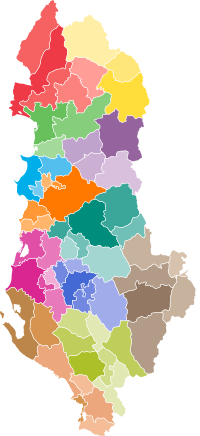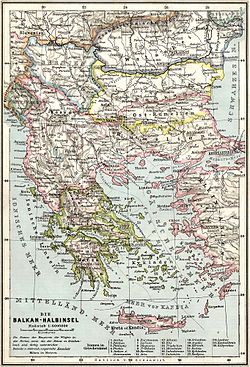Albania is a unitary parliamentary constitutional republic, in which the president of Albania is the head of state and the prime minister of Albania is the head of government in a multi-party system. The executive power is exercised by the Government and the prime minister with its Cabinet. Legislative power is vested in the Parliament of Albania. The judiciary is independent of the executive and the legislature. The political system of Albania is laid out in the 1998 constitution. The Parliament adopted the current constitution on 28 November 1998. Historically Albania has had many constitutions. Initially constituted as a monarchy in 1913, Albania became briefly a republic in 1925, and then a authoritarian monarchy in 1928. In 1939 Albania was invaded by Fascist Italian forces, imposing a puppet state, and later occupied by Nazi German forces. Following the partisan liberation from the Nazis in 1944 a provisional government was formed, which by 1946 had transformed into a communist one-party state. In March 1991 democracy was restored with multi-party elections.

Prefect is a magisterial title of varying definition, but essentially refers to the leader of an administrative area.
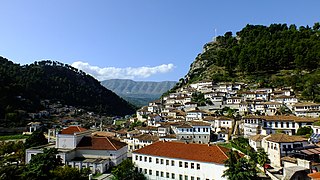
Berat is the ninth most populous city of Albania and the seat of Berat County and Berat Municipality. By air, it is 71 kilometres north of Gjirokastër, 70 kilometres west of Korçë, 70 kilometres south of Tirana, and 33 kilometres east of Fier.
Counties, also sometimes known as prefectures, are the first-level administrative subdivisions of Albania, replacing the earlier districts. Since 2000, there have been 12 counties. Since 2015, they have been divided into 61 municipalities and 373 communes.

Districts were first and second-level administrative divisions of Albania from 1913–2000. Their number, size, and status changed over time. From 1991 to 2000, the 36 districts were organized into 12 counties. Pursuant to the 1998 Constitution and Law No. 8653, the districts were abolished and replaced with the larger counties and smaller municipalities.
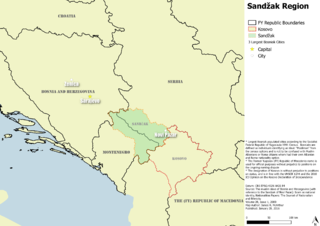
Sandžak is a historical geo-political region located in the southwestern part of Serbia and the eastern part of Montenegro. The name Sandžak derives from the Sanjak of Novi Pazar, a former Ottoman administrative district founded in 1865.

Durrës County, officially the County of Durrës, is a county in the Northern Region of the Republic of Albania. It is the smallest by area and the second most populous of the twelve counties, with 292,029 people within an area of 766 km2 (296 sq mi). The county borders on the Adriatic Sea to the west, the counties of Lezhë to the north, Dibër to the east and Tirana to the south. It is divided into three municipalities, Durrës, Krujë and Shijak, with all of whom incorporate sixteen administrative units.

The Sanjak of Novi Pazar was an Ottoman sanjak that was created in 1865. It was reorganized in 1880 and 1902. The Ottoman rule in the region lasted until the First Balkan War (1912). The Sanjak of Novi Pazar included territories of present-day northeastern Montenegro and southwestern Serbia, also including some northern parts of Kosovo. In modern day terms the region is known as Sandžak.
The present Constitution of the Republic of Albania was adopted by the Parliament of Albania on 21 October 1998 and certified by presidential decree on 28 November 1998, following a failed referendum which was boycotted by the opposition. It is split up over many different acts. The document succeeded the 1976 Constitution, originally adopted at the creation of the People's Socialist Republic of Albania on 28 December 1976 and heavily amended on 29 April 1991.
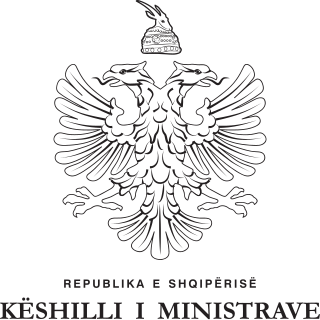
The Council of Ministers is the executive branch that constitutes the Government of Albania. The Council is led by the Prime Minister of Albania. The prime minister is nominated by the President from among those candidates, who enjoy majority support in the Parliament; the candidate is then chosen by the Parliament. In the absence of the prime minister, the Deputy Prime Minister takes over his functions. There are 19 other government members, serving as deputy prime ministers, government ministers or both; they are chosen by the prime minister and confirmed by the Parliament.
The Albanian revolt of 1847 was a 19th-century uprising in southern Albania directed against Ottoman Tanzimat reforms which started in 1839 and were gradually being put in action in the regions of Albania.
The Uprising of Dervish Cara was a 19th-century uprising in northern Ottoman Albania directed against the Ottoman Tanzimat reforms which started in 1839 and were gradually being put in action in the regions of Albania. Some historians include the actions in Dibër of the same time under the same historical name, though the events in Dibër were independent and headed by other leaders.
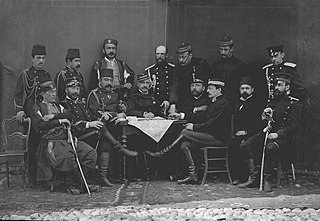
The International Commission of Control was the commission established on October 15, 1913, on the basis of the decision by the six Great Powers made on July 29, 1913, according to the London Treaty signed on May 30, 1913. Its goal was to take care of the administration of newly established Albania until its own political institutions were in order.
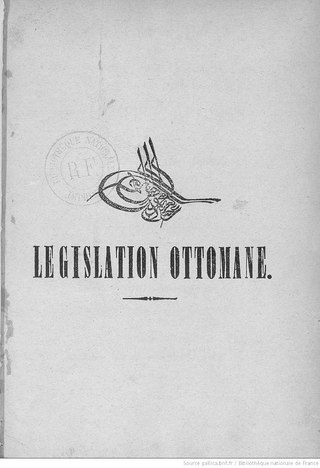
A vilayet, also known by various other names, was a first-order administrative division of the later Ottoman Empire. It was introduced in the Vilayet Law of 21 January 1867, part of the Tanzimat reform movement initiated by the Ottoman Reform Edict of 1856. The Danube Vilayet had been specially formed in 1864 as an experiment under the leading reformer Midhat Pasha. The Vilayet Law expanded its use, but it was not until 1884 that it was applied to all of the empire's provinces. Writing for the Encyclopaedia Britannica in 1911, Vincent Henry Penalver Caillard claimed that the reform had intended to provide the provinces with greater amounts of local self-government but in fact had the effect of centralizing more power with the sultan and local Muslims at the expense of other communities.

The Sanjak of Albania was a second-level administrative unit of the Ottoman Empire between 1415 and 1444. Its mandate included territories of modern central and southern Albania between Krujë to the Kalamas River in northwestern Greece.

Albania has 2,972 villages as of 2016. Albania has reformed its internal administrative divisions 21 times since its Declaration of Independence from the Ottoman Empire in 1912. Following the most recent reorganization, enacted in 2014 and carried out in June 2015, Albania's 12 counties were entirely divided into 61 municipalities for regional government and 373 administrative units for local government. These administrative units, communes, towns now oversee most government at the village level.

The Sanjak of Elbasan was one of the sanjaks of the Ottoman Empire. Its county town was Elbasan in Albania.

Aziz Pasha Vrioni (1859–1920) was an Ottoman-Albanian politician of the early 20th century. He was a member of the Ottoman Parliament representing Berat, and Albanian Minister of Finance and Minister of Agriculture and of Mines.

Hoxhë Hasan Moglica commonly referred as Hoxhë Moglica, was an Albanian alim, müderris, engineer, philosopher, patriot, nationalist figure and proclaimed as martyr of Albanian language and nation by the Albanian government.

The Sanjak of Durrës, also known in the west by the Italian form as the Sanjak of Durazzo, was one of the sanjaks of the Ottoman Empire. It was named after its county town Durrës. The sanjak was composed of the kazas of Durrës, Tirana, Shijak, Kavajë, and Krujë. The Sanjak of Durrës was located in the southern part of the Vilayet of Scutari and was one of its two constituent sanjaks. It bordered to the north the Sanjak of Scutari, Manastir and Dibra to the north-east, Elbasan to the east and south, and the Adriatic Sea to the west. Its terrain is generally flat and plain, and only the eastern parts of the kazas of Tirana and Kavajë are mountainous.
